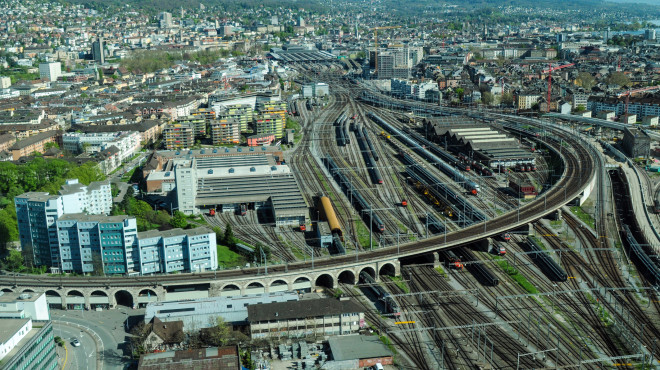The case of «Rastatt» and what we can learn from it
Static freight trains and a cumbersome crisis management- the current route disruption on the north-south axis brings the rail freight transport to its limits and causes a not yet assessable economic damage. If the rails are to stay an attractive carrier for future freight transport, national and international action is indispensable.
Since 12 August 2017, the Rheintal railway line in Rastatt near Karlsruhe has been disrupted. Following an accident during the construction of a tunnel, the overlying railroad tracks started to sink. So, with one minor blow, the railway on the north-south axis was impassable for an indefinite period of time. While diversions and replacement capacities were quickly provided for passenger transports, goods transports are still struggling to get by, even one month after the incident.
Normally, about 200 freight trains a day use the affected part of this railway. They connect the big seaports in Belgium and the Netherlands with Italy and provide the local economy with means of production. The disruption stops about 45 percent of the entire freight transport on the north-south axis. Only 16 percent of the usual volume have been transported by railroad during the first few weeks. Alternative routes going through Stuttgart-Singen, France or the Brenner-pass have only been put into operation slowly, as international coordination was very weak. The rules of operation in Germany, France, Austria and Switzerland are not coordinated enough and serious communication barriers prevail in some areas. Moreover, there are still bottlenecks with railway operators: There is a lack of locomotives and, most of all, of train drivers that could operate on alternate routes. Meanwhile, the repair of the damaged tracks is being delayed more and more - according to the infrastructure operator DB Netz AG, the disruption will be solved only by 2 October of this year.
What remains is a big economic damage- probably running into billions. But even worse is the long-term image loss that the rail freight transport sector and the model of transfer policy from road to rail are suffering from. It goes to show: The overall system is highly vulnerable - foremost because the countries concerned lack the willingness to align their policies in the interest of the entire corridor. Nevertheless, there is also a reason for confidence: Processing the case « Rastatt » creates an opportunity to tackle the problems that have surfaced. This is especially the case on the European level. The EU should rethink the system of freight transport corridors together with the member states. The present construct and the division of responsibility do not meet the requirements - there is dire need for a common, operationally effective corridor management. Furthermore, robust emergency scenarios must be available, which can be put into practice cooperatively by all involved states. It is, however, also important to create the necessary preconditions for a better coexistence of freight and passenger transports on the national levels. This is essential if the railroad should stay an attractive carrier for freight transport.






